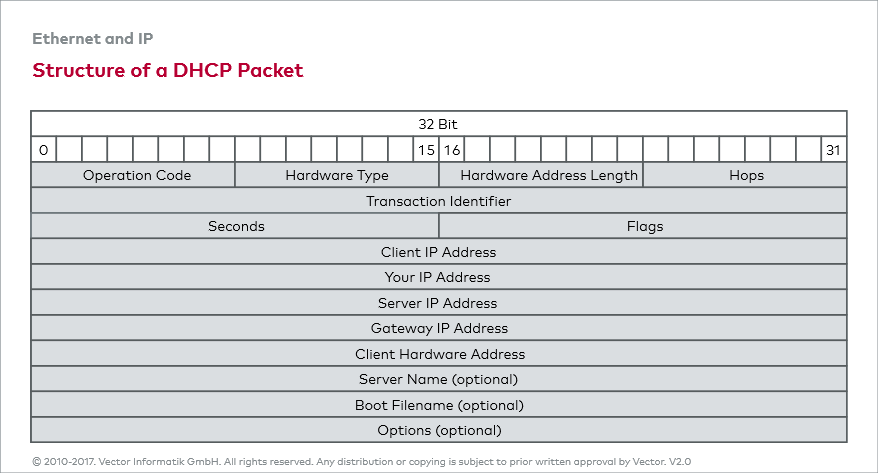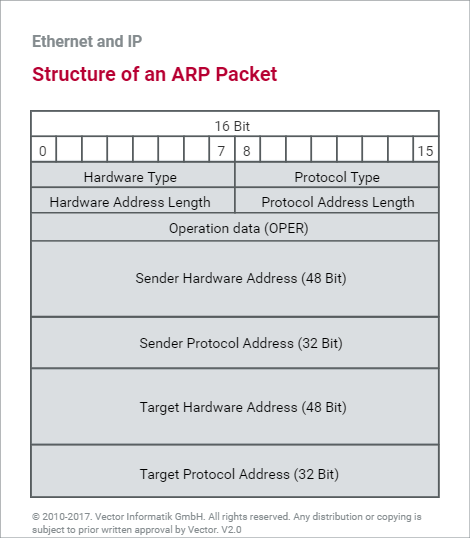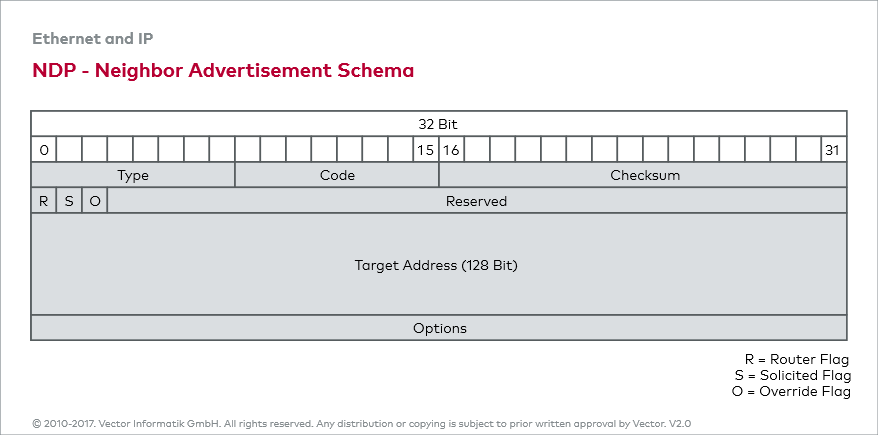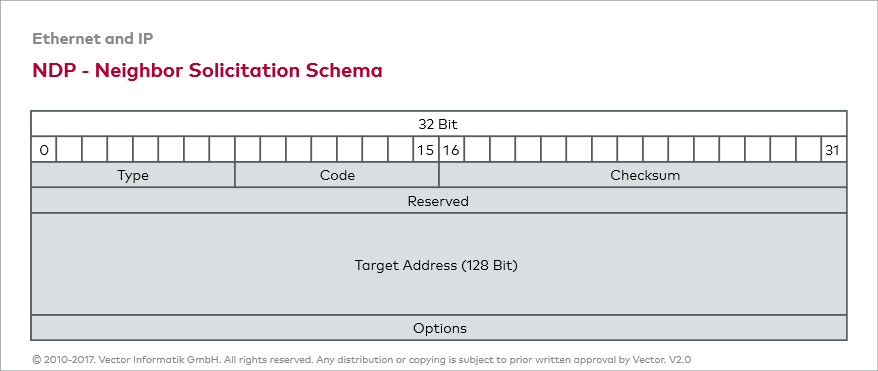ARP, NDP, ICMP, IGMP, DHCP
Additional protocols
For auxiliary and support tasks, a series of additional protocols exist that run more or less in the background. For example, the automotive industry currently uses the following additional protocols:
DHCP
The Dynamic Host Configuration Protocol is able to automatically assign IP addresses to one or more nodes. This enables a new IP node to be integrated in an existing network without having to configure it manually.
ICMP
The Internet Control Message Protocol is part of every IP implementation and is used there for control tasks. A typical application example is the ICMP Echo Request (PING). IP communication between two computers can be checked using this command. This is done by sending an ICMP Echo Request to a desired node. If this node then answers with an ICMP Echo Reply (PONG), the requesting node knows that the desired node is available.
ARP
The Address Resolution Protocol is used to determine the correlation between IP and MAC addresses. If an IP node wants to address a particular destination but does not know its MAC address, it can be requested using ARP. The send node broadcasts an ARP request to the network for this. After the response is received (ARP response), the contained MAC address can then be saved in the ARP cache and forwarded.
NDP
The Neighbor Discovery Protocol replaces the ARP protocol when using IPv6 and is based on ICMPv6. The protocol is used for the following purposes:
- Router Discovery: Identification of existing routers in the network
- Prefix Discovery: Determination of the address prefix (network bits of IPv6 address) for local and remote nodes
- Support for automatic configuration of IPv6 addresses of a network node (Link-Local Address Generation) without using DHCP
- Parameter Discovery: Setting of various parameters such as Hop Limit
IGMP
The Internet Group Management Protocol is used by IPv4 systems to forward their Multicast group membership to Multicast routers. All hosts that want to receive IP Multicast must have implemented this protocol.





